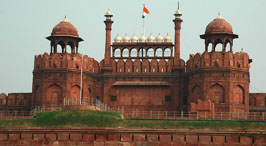
- Mobile
+91-9958308506
- E-Brochure
Download E-Brochure


Delhi (also known as the National Capital Territory of Delhi) is a metropolitan region in India that includes the national capital city, New Delhi. It is India's second-most-populous city after Mumbai, and the largest city in terms of area. With a population of 22 million in 2011, the city is the fourth-largest city in the world. The NCT and its urban region have been given the special status of National Capital Region (NCR) under the Constitution of India's 69th amendment act of 1991. The NCR includes the neighbouring cities of Baghpat, Gurgaon, Sonepat, Faridabad, Ghaziabad, Noida, Greater Noida and other nearby towns, and has nearly 22.2 million residents.
Although technically a federally administered union territory, the political administration of the NCT of Delhi today more closely resembles that of a state of India, with its own legislature, high court and an executive council of ministers headed by a Chief Minister. New Delhi is jointly administered by the federal government of India and the local government of Delhi, and is the capital of the NCT of Delhi.
Delhi has been continuously inhabited since the 6th century BC. Through most of its history, Delhi has served as a capital of various kingdoms and empires. It has been captured, ransacked and rebuilt several times, particularly during the medieval period, and the modern Delhi is a cluster of a number of cities spread across the metropolitan region. This is why Delhi is sometimes called as City of cities.
Delhi was the site of ancient Indraprastha, the mythical capital of the Pandavas during the Mahabharata. Delhi re-emerged as a major political, cultural and commercial city along the trade routes between northwest India and theGangetic plain during the Delhi sultanates.
In AD 1639, the Mughal emperor Shah Jahan built a new walled city in Delhi, which served as the capital of the Mughal Empire from 1649 until the Rebellion of 1857. The British captured Delhi in 1857 and the city replaced Kolkata as the seat of British government in India in 1911. A new capital city, New Delhi, was built to the south of the old city during the 1920s. When the British left India in 1947, New Delhi became its national capital and seat of
There are a number of legends associated with the origin of the name Delhi. One is that it is derived from Dhillu or Dilu, a king who built a city at this location in 50 BC and named it after himself. Another legend holds that the name of the city is based on the Hindi/Prakrit word dhili (loose) and that it was used by the Tomaras to refer to the city because the Iron Pillar of Delhi had a weak foundation and had to be moved. The coins in circulation in the region under the Tomaras were called dehliwal. According to the Bhavishya Purana, King Prithiviraja,of Indraprastha built a new fort in the modern-day Purana Qila area for the convenience of all four castes in his kingdom. He ordered the construction of a gateway to the fort and later named the fort dehali. Some historians believe that the name is derived from Dilli, a corruption of dehleez or dehali—both terms meaning 'threshold' or 'gateway'—and symbolic of the city as a gateway to the Gangetic Plain. Another theory suggests that the city's original name was Dhillika.
The people of Delhi are referred to as Dilliwallahs or Delhiites. The city is referenced in various idioms of the Northern Indo-Aryan languages. Examples include:
Maharaja Express Guest Always Special for us
 Comparison Chart
Comparison Chart Fact Sheet
Fact Sheet  History
History